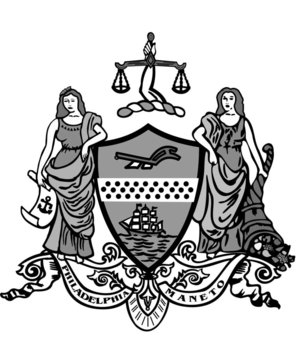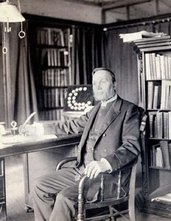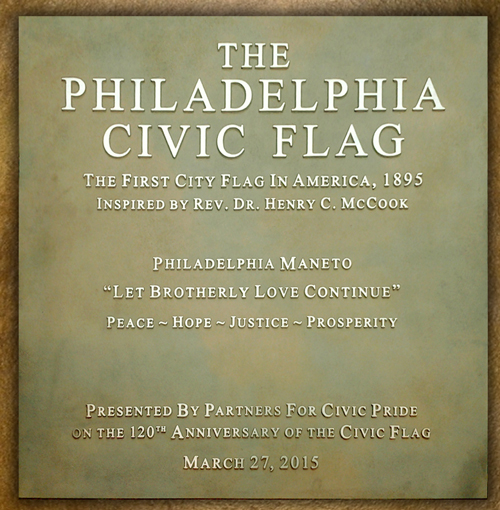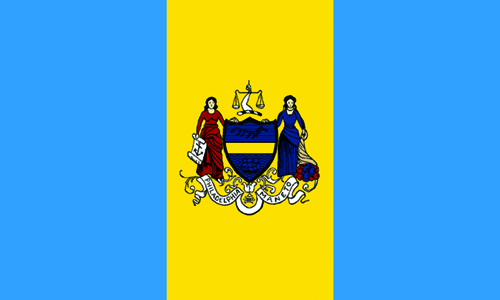
THE FIRST OFFICIAL CITY FLAG IN AMERICA
MARCH 27, 1895
AN IDEA CONCEIVED AND DESIGNED BY
REV. DR. HENRY C. McCOOK (1837 -1911)
By Brenda Exon and Robert Stoller - The Philadelphia Inquirer-pg. A18, March 27, 2015
Today marks a significant event in Philadelphia's illustrious history: the 120th anniversary of Philadelphia's civic flag.

"The seal on the city flag includes the motto "Philadelphia Maneto."
Philadelphia's azure-blue and golden-yellow flag was inspired and designed by the Rev. Dr. Henry C. McCook (1837-1911), an esteemed entomologist and a vice president of the Academy of Natural Sciences in Philadelphia, as well as a minister at the Philadelphia Tabernacle Presbyterian Church.
Known for his mastery in the study of nature as well as his creative mind, McCook wrote several books on the behavior of ants and spiders, drawing parallels between the social activities of insects and those of human beings. He wrote a landmark book, Ant Communities and How They Are Governed: A Study in Natural Civics (Harper & Bros., 1909), and one might say that our Philadelphia flag was inspired by those very principles of natural civics. Furthering his social theories, McCook suggested that a city flag might "inspire a spirit of civic loyalty" and be used as a tool to unite a human community.

"The Rev. Dr. Henry C. McCook, who created
the design for Philadelphia's flag, in his study."
It is significant that McCook recognized the city's "ancient coat of arms" - the 1874 seal of Philadelphia - as an essential element of the flag design, for the seal incorporates the city motto, Philadelphia Maneto ("Let Brotherly Love Continue"). By displaying this seal's powerful message so prominently, the flag could serve to educate the public about its message while linking the citizenry to our founder, William Penn, and specifically his dream of a city named for "Brotherly Love."
Also germane to the design of the seal are the principles of peace, hope, justice, and prosperity, which are identified as important values to the city and to being Philadelphian.
So striking is this design that it is the only one of its kind that has never been altered or modified. Thus, as the bronze historic marker is installed at the base of the Art Museum flagpole, it will not only note the historical significance of the Philadelphia flag's story, but it will also pay homage to the fact that every American city flag can be traced back to McCook's original concept.

Bronze historic marker is installed at the base of the Philadelphia Art Museum flagpole
(Book a Philly Pride Lady presentation to hear "the rest of the story!" Click here.)







